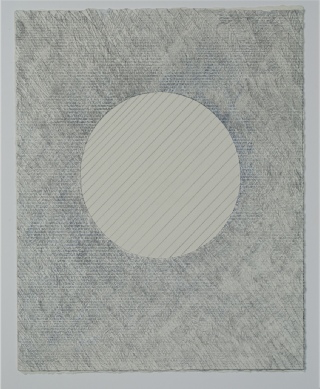Another Timbre TimHarrisonbre
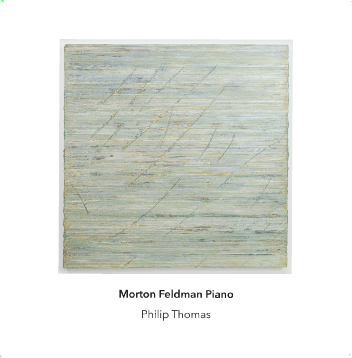
at144x5 Morton Feldman Piano box set Philip Thomas
A 5-CD box set with a 52-page book, containing virtually all of Feldman’s music for solo piano, beautifully played by Philip Thomas.
Disc One: 1-4 Last Pieces (1959) 5 Piano (1977) 6 Palais de Mari (1986)
Disc Two: 1 Untitled piano piece (194?) ** 2-5 Illusions (1949) 6-8 Three Dances (1950)
9-13 Nature Pieces (1951) 14 Variations (1951) 15-16 Two Intermissions (1950)
17 Intermission 3 (1951) 18 Intermission 4 (1952) 19 Intersection 2 (1951)
20-22 Three Pieces for Piano (1954) 23 Piano Piece 1955 24 Piano Piece 1956A
25 Piano Piece 1956B 26 Intermission 6 #1 (1953) 27 Intermission 5 (1952)
Disc Three: 1 Intermission 6 #2 (1953) 2 Extensions 3 (1952)
3-4 Music for the film ‘Sculpture by Lipton’ (1954) ** 5 Piano Piece 1952
6 Intersection 3 (1953) 7 Piano Piece (1964) 8 Vertical Thoughts 4 (1963)
9 Figure of Memory (1954) ** 10 Piano Piece (1963)
11 Intermission 6 #3 (1953) 12 Triadic Memories start (1981)
Disc Four: 1 Triadic Memories concluded (1981)
Disc Five: 1 For Bunita Marcus (1986)
**= first published recording
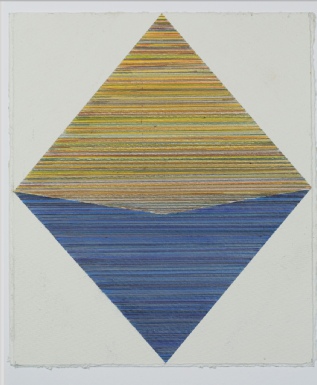
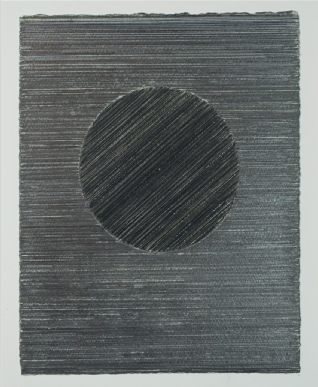
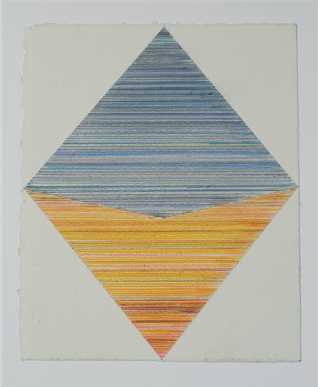
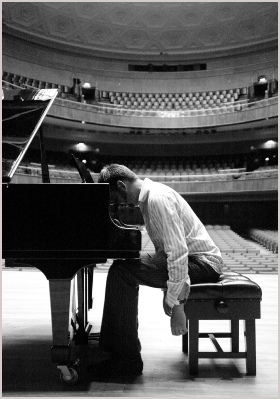
The Morton Feldman Piano box set is the most extensive survey of Feldman’s piano music to date, and has been received with extremely high critical acclaim. Released exactly 20 years after John Tilbury’s long unavailable 4-CD set, the new box includes several pieces which weren’t included there, and has three works which have never been released on disc before.
Philip Thomas has been playing Feldman’s music for 25 years and is one of the foremost interpreters of his work with an extraordinary gentle touch. He and John Tilbury combined forces to produce the highly acclaimed Two Pianos double CD, which featured Feldman’s music for multiple pianos. The Feldman Piano box set is the culmination of decades of study, and is accompanied by a 52-page booklet in which Philip Thomas writes about Feldman’s music from a pianist’s point of view:
“Playing Feldman’s music inevitably changes aspects of one’s technique. The orientation is towards the vertical aspects of piano playing - the attack - rather than the horizontal - the line. Yet Feldman made much of his desire for instrumental sound devoid of attack, which is hard for the piano, whose action is fundamentally percussive. Yet knowing this affects how one treats the instrument: pressing the keys serves to release the sound, setting strings in motion.”
You can read or download Philip Thomas’s extensive sleevenotes here
The booklet also contains beautiful artworks by David Ainley, some of which are reproduced below
£35 + £4 postage worldwide
Some reviews and comments
The Guardian, CD of the week: ‘Morton Feldman wrote for the piano for most of his composing career, and the 46 pieces included in Philip Thomas’s collection – the most extensive survey of this music to date, including several works recorded for the first time – provide a thread through its changing emphases and stylistic shifts. The earliest here is an untitled piece from 1942, just one minute long and composed when Feldman was 16; the latest is Palais de Mari from 1986, the year before his death.ollection – the most extensive survey of this music to date, including several works recorded for the first time – provide a thread through its changing emphases and stylistic shifts. The earliest here is an untitled piece from 1942, just one minute long and composed when Feldman was 16; the latest is Palais de Mari from 1986, the year before his death.
Thomas has been studying and playing Feldman for a quarter of a century, and his lengthy essay accompanying these discs, in which, as well as the pieces themselves, he discusses different approaches to interpreting this fascinatingly varied music, is an essential addition to the performances. As he points out, recordings of both of the biggest works here, the 90-minute Triadic Memories from 1981, and the hour-long For Bunita Marcus, written four years later, already run into double figures, and he admits to having had doubts about adding to those numbers. But including them as part of a much more comprehensive set made sense, for it enabled him, as he writes, “to find out how one piece rubs against another, where the contrasts and points of contact are.” The pieces that Thomas has omitted, and his reasons for doing so, are clearly explained, too.
What we have here, then, is an authoritative presentation of some of the most important keyboard music of the second half of the 20th century. If the works here from the late 1940s and early 50s reveal the importance of Morton Feldman wrote for the piano for most of his composing career, and the 46 pieces included in Philip Thomas’s collection – the most extensive survey of this music to date, including several works recorded for the first time – provide a thread through its changing emphases and stylistic shifts. The earliest here is an untitled piece from 1942, just one minute long and composed when Feldman was 16; the latest is Palais de Mari from 1986, the year before his death. meticulously calculated harmonies, whether the scores are indeterminate, or notated conventionally or graphically. Between 1964 and 1977, Feldman wrote nothing for solo piano, but the piece with which he broke that silence, baldly titled Piano, is one of the most remarkable in the whole set. Though it is far less well-known than the larger scale works that followed it, Piano seems to exploit every facet of the instrument – its range of tone and touch, harmonics and resonance – more comprehensively than anything else Feldman wrote. It provides a perfect demonstration of Thomas’s mastery and understanding of this music too, alive to every inflection and subtle change of colour, and to every challenge it presents.’
Andrew Clements, The Guardian
‘Anyone who admires the introspective soundscapes of American composer Morton Feldman needs this New set of his piano music. It’s curated with enormous care and insight by Philip Thomas, whose notes are as illuminating as anything I’ve read on the challenges of performing, recording and listening to Feldman…
‘An outstanding set, lovingly curated with excellent programme notes on Feldman’s music.’
Andrew McGregor, ‘Record Review’, BBC Radio 3
‘It’s 20 years since John Tilbury released his highly regarded set of Morton Feldman’s complete piano music on the LondonHALL label. Since then the composer’s reputation has undergone a transformation. Where once new Feldman recordings were rare and exciting, these days keeping up with the release schedule takes real effort….
This new compendium of Feldman played by the Sheffield based pianist Philip Thomas is released partly in acknowledgement of Tilbury’s pioneering efforts two decades ago. But so much has changed, with so many recordings of the piano music already available, that Thomas has had to think carefully about his motivation in adding to the stockpile…. as you’d expect from Another Timbre, the textures and colours in this new set are vividly captured and expertly balanced.
But Thomas’s approach – working closely with his producer Simon Reynell – moves far beyond wanting to approximate a concert hall perspective of live Feldman on disc. In a 50 page essay about his relationship to Feldman’s music, Thomas emphasises that while other composers make you think about the sound of a G sharp, Feldman focuses the concentration on how notes feel. The unique challenges of his piano writing, Thomas implies, returns his interpreters to basic questions: about how the wrist moves as the hand attacks a note – if indeed attack is the right word in the context of Feldman; about the coordination of fingertip working in combination with fingerpad. Articulation that works well for Beethoven or Stockhausen would likely torpedo the delicate equilibrium of a Feldman score. Thomas writes that his set was recorded so that “the listener is somehow snuggled inside the body of the instrument, ears almost touching the strings, feeling the vibrations as the hammer strikes”.
…Throughout the set you’re aware of how thoroughly Thomas grasps the architecture of the music, and how deeply this sensitivity is grounded inside an intimate communion with the resonant swells and overtones of Feldman. Again and again I was reminded of Bach playing of the highest order as Thomas’s crystalline clear orientation around line makes the motility between contrapuntal lines dance internally. My favourite moment in the whole set occurs midway during For Bunita Marcus as Thomas nonochalantly slips the rhythm into double-time, while maintaining absolute control over dynamics, notes not so much played as massaged to life.’
Philip Clark, The Wire
Everything about this six-hour, five-disc box-set of Morton Feldman piano music radiates the care, attention-to-detail and, yes, love that have been invested in producing it. The artwork, packaging, documentation and information are all second to none, as is the crystal-clear recording quality. Any cynic questioning the need for another exquisitely-produced box-set should note that, among its one-hundred-and-fifty-plus releases to date, this is only the second box-set issued by Another Timbre, the first being the much-praised six-disc Wandelweiser und so weiter; rather than releasing its ten-disc Canadian Composers Series as a box-set, the label issued them individually, giving the accompanying booklet away free. In a nutshell, Another Timbre only issues box-sets when absolutely essential… and this one is undoubtedly essential.
The album title Morton Feldman Piano is guarded in its claims; the album does not contain all of Feldman’s music for piano, nor is the selection necessarily the “best” of Feldman despite the presence of such popular—and much recorded— compositions as “Triadic Memories” and “For Bunita Marcus.” The forty-four compositions here date from a 1942 “student piece,” through all of Feldman’s key periods, ending with his final composition for solo piano, “Palais de Mari” (1986). The only comparable multi-disc set of Feldman’s piano works is the long-unavailable, limited-edition four-disc set Morton Feldman All Piano (LondonHALL, 1999) featuring John Tilbury at the piano. Although that set did not include all of Feldman’s music for piano either, comparison of the two reveals a large measure of agreement about what to include. Morton Feldman Piano includes the very first published recordings of three pieces: the Satie-esque “Untitled piano piece” from 1942; “Music for the film ‘Sculpture by Lipton’ ,” from 1954, transcribed by pianist Philip Thomas himself as Feldman’s manuscript of it was lost (see YouTube below); “Figure of Memory (For Merle Marsicano)” from 1954, which was performed regularly through to the 70’s as the music for dance performances by Merle Marsicano.
The mention of John Tilbury—”considered one of the foremost interpreters of Morton Feldman’s music,” according to Wikipedia—makes this a good point at which to introduce Morton Feldman -Two Pianos and other pieces 1953-1969(Another Timbre, 2014) a double album on which Tilbury and Thomas played several Feldman pieces at two pianos and collaborated with other musicians on more pieces, including two three-piano pieces with Catherine Laws, and one four-piano piece with Laws and Mark Knoop. At the time, Thomas had a burgeoning reputation as an interpreter of John Cage, Feldman and Christian Wolff among others. That reputation was enhanced by his being placed next to Tilbury for the two-piano pieces. (A comparable historical analogy would be the 1957 recording session for the album Thelonious Monk with John Coltrane [Jazzland, 1961], in particular the two tracks on which Coltrane and Coleman Hawkins played together as equals, doing wonders for the esteem of the rising star Coltrane.) It makes no sense to describe either Tilbury or Thomas as the better Feldman interpreter; suffice to say that are both exceptional.
As well as Thomas’ skills as a pianist, the box-set displays his talents as a Feldman scholar; over thirty-seven eloquent pages of the set’s booklet, he discusses topics as diverse as his thoughts on performance, pianos and touch, the decay of a piano’s sound, variations in Feldman’s notation and all of the music in the box set. Altogether, it makes enlightening reading, particularly when combined with listening to the music itself. Thomas writes that this set of recordings tried to record such that the resultant audio is as if the listener is somehow snuggled inside the body of the instrument, ears almost touching the strings, feeling the vibrations as the hammer strikes. It is a great tribute to Thomas’ playing and Simon Reynell’s recording that the music here fully succeeds in delivering on those aims.
Forget about albums-of-the-week, end of year lists and so forth; Morton Feldman Piano seems destined to be played, discussed and cherished for many decades to come. A historic five-star release.
John Eyles, All About Jazz
“Incredibly well recorded, extraordinarily performed. A necessary set t have and cherish. Amazing.”
Brian Olewnick
“This is a beautiful box set in both appearance and sound. Do yourself a favour and buy it.”
Comment in The Guardian
“
